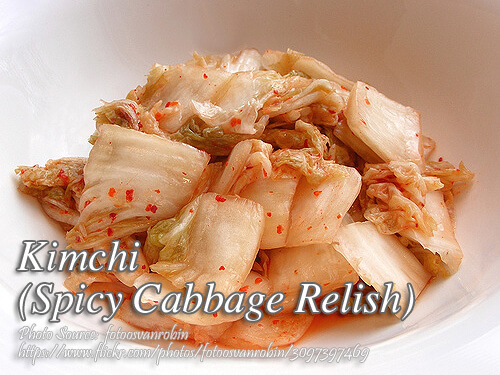How to Make Kimchi (Spicy Cabbage Relish)
Kimchi is a traditional Korean fermented cabbage relish known for its crisp texture, spicy-sour flavor, and ability to brighten up hearty meals.
Servings: 6 servings
Calories: 25kcal
Ingredients
- 1 head Chinese cabbage about 1/2 kilo to 600 grams
- 10 cups water just enough to cover the cabbage
- 5 Tbsp. salt divided
- 1/2 cup chopped green onion
- 1/4 cup minced garlic
- 3 tsp. crushed red chili pepper
- 1 tsp. chopped ginger
Instructions
How to make Kimchi or Spicy Cabbage Relish:
- Slice the Chinese cabbage into 3/4 to 1 inch strips or squares.
- Combine water and 3 tablespoons of salt. Stir until salt is dissolved.
- Soak cabbage in the brine solution in a large glass bowl about 5 to 10 hours in the refrigerator (You can put a weighted plate to keep the cabbage submerged in water.) Drain.
- In a bowl combine cabbage, green onions, 2 tablespoons salt, garlic, red chili pepper and ginger.
- Mix well to combine. Correct seasoning if you want more salt or chili.
- Transfer cabbage mixture into a large sterilized jar. Cover and refrigerate 2 days or up to a week before serving.
- Serve as a relish or salad. This keeps well for weeks in the refrigerator. If you want a spicier taste and more reddish color, add more chili pepper flakes.
